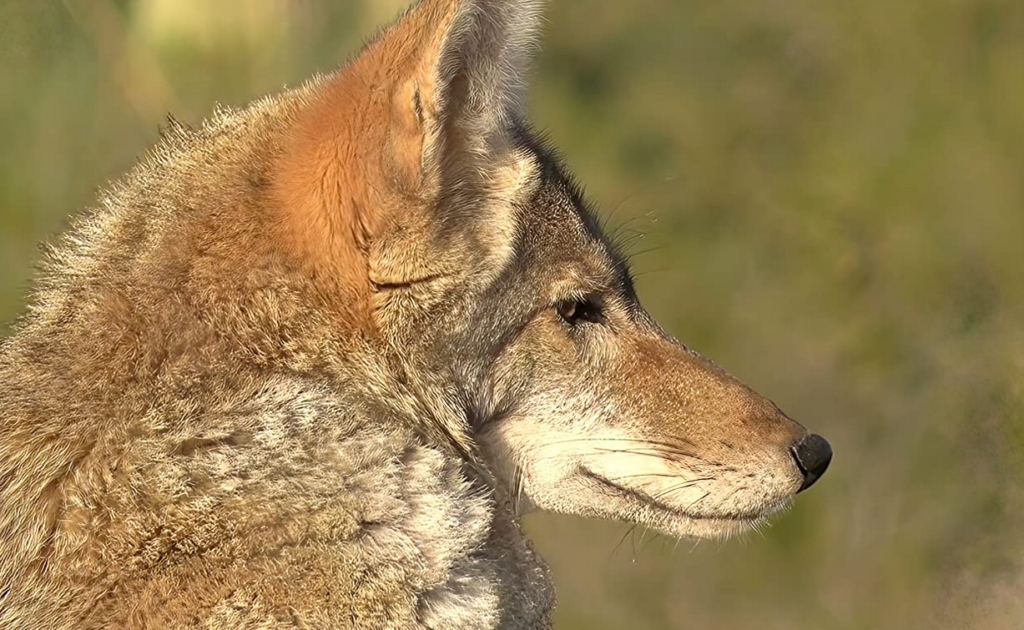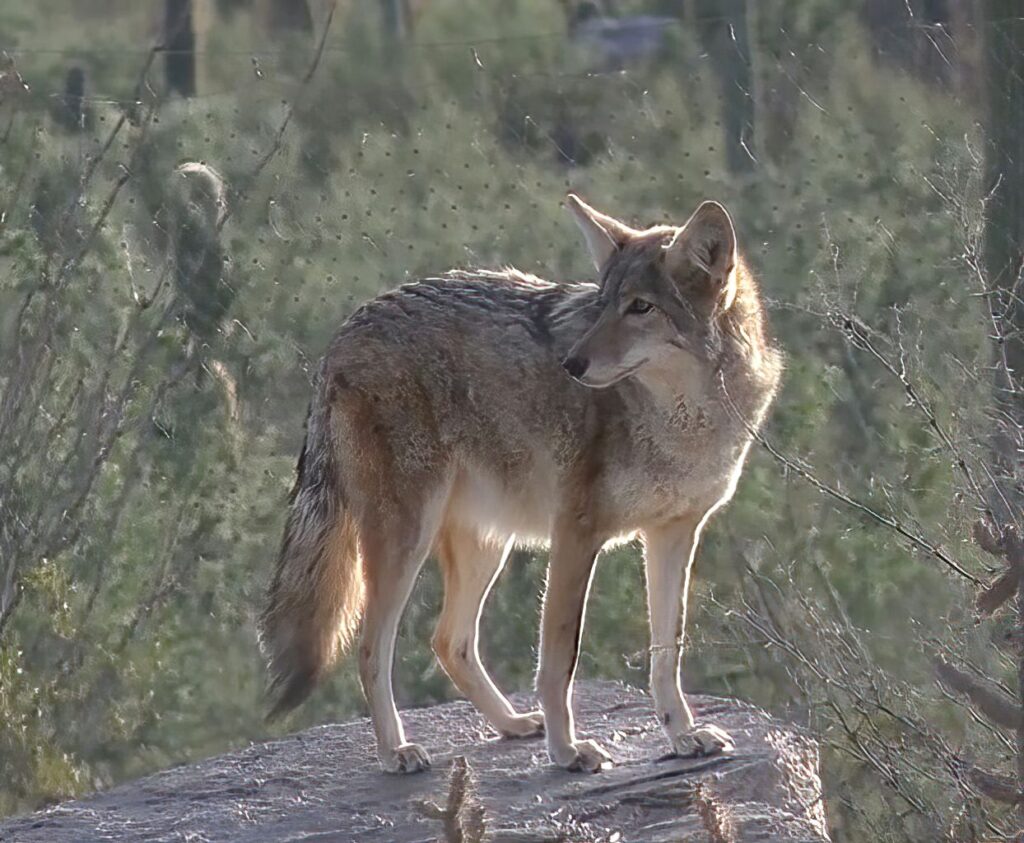I recently got to chat with filmmaker Julie Marron where we discussed her new documentary American Bolshevik which explores our relationship with coyotes. This is a subject near and dear to my heart so I hope you enjoy reading this as much as I enjoyed doing it.
Over the past year, I’ve become obsessed with coyotes, because there’s so many around the Toronto area, and I never used to see them before but they’ve really started to come into the urban areas. I see them all the time now and there’s one that essentially asked for help a few weeks ago as it had an injured leg; it came up to me but didn’t get too close but I could tell it needed help so I called the park and they said they would help him. I definitely think that they do get a bad rap from people.
That’s so interesting and that’s exactly why we made this film especially here; I live in Rhode Island in the New England area and we never had them around when I was younger but over the past couple of decades more and more, we started seeing coyotes and we’ve had to learn to live with them. I think they’re wonderful. I think they’re like these really amazing creatures. One of the things that really struck me was kind of the animosity; you get people who love them and are like, wow, this is amazing, coyotes are really cool and then we get people who are like, we hate them, get rid of them. They tend to be very polarizing, which I hadn’t really expected. But we started doing research on this topic. Of course, Dan Flores’ book Coyote America, I don’t know if you’ve read it but throughout the film, he talks about the history and how we got to where we are today. I was just really amazed at this very complex history that we have with the coyote over the past century or more here in the United States and I just thought it was a really fascinating story…
And it’s one that nobody has told, or I rarely hear anything about. I just thought the timing was so strange, because I feel that it just seems to be a thing everywhere that they are coming more into the urban areas. But that’s because we’re taking their habitats from them, particularly here where there’s constant building around the Toronto area, so they have less and less places to go. I’m finding that we need to give them some leniency because they have a right to exist as well.
Right? Yeah, exactly and they’re really successful in cities, too. It’s kind of amazing. One of the things that I also learned was thousands of years ago, they actually lived amongst some of the urban areas in some of the ancient civilizations that we’ve got in the Americas as well. They’re good for us in these areas, too. They benefit us in these urban areas; they eat rats and mice and they keep the rodent population down. As long as we’re not feeding them deliberately and leaving things out for them, they pretty much try to keep away from humans, it’s only when we interfere with that and start feeding them and habituating them to people that we start to have these conflicts with them. That was one of the reasons we made the film. I personally think they’re really fascinating animals. I love seeing them. I have a cat. I’ve got a couple of dogs. I have to be careful but I love seeing the coyotes out and about; I just think it’s really amazing.

I hear them every night outside my apartment. I’m on the fifth floor, and we hear them on the other side of the train tracks. I don’t know where they are, but we hear them with that high-pitched yapping.
Oh, yeah, yeah. I think it’s really amazing. There’s been some work done on what the different calls mean. I’ve kind of read some stuff. I wasn’t able to fit it into the film, but it’s really interesting. That’s how they communicate with each other. Sometimes people get scared of that, they think they’re calling other coyotes for the hunt, which is not typically what that is. It’s just sort of a way of determining who’s in the area. It’s just really interesting and I want to do some more research on that.
How do you find editing all the interviews together into a coherent narrative?
Well, Dan Flores is sort of the backbone to the story, where he provides the structure of our long history with the coyote. Then what we did from that is just weave in this modern-day conflict that we had here in Rhode Island where people were really concerned about them. Diana Prince lost her beloved dog which is heartbreaking but her response to that was to say, “hey, they’re wild animals, we don’t know enough to either live with them or manage them effectively. So why don’t we learn about them?” She’s the one who really precipitated this sort of groundbreaking study that was conducted here in Rhode Island by the The Narragansett Bay Coyote Study, which provided us with a great deal of really valuable information, and gave us the tools that we need to coexist with them. I think that it’s just the way it was structured, and what we learned from it was really helpful. So, laying that over this long history, and then talking to Chris Schadler up in New Hampshire kind of rounded out that local story, because she farmed sheep here in New England, and she had to figure out how to coexist with them. I think that’s the part we enjoyed was sort of taking this present-day conflict and understanding elements of that. Then laying that out against this long history especially with the modern-day settlers over the past 150 years in America, and in our very long history with these coyotes was kind of the fun part for me.
Although the title is explained in the film, when did you come up with American Bolshevik as the title for the documentary? Was that always the case or did you have a different name initially?
Yeah, we had a few different names kicking around, and we’re just like, Oh, the original Bolshevik. We should call it American Bolshevik. We laughed at that, but it kind of stuck and it’s really interesting, because the title itself is as polarizing as the coyote has been. People hear that title and in the United States, when it was published in Scientific American in 1920 Bolshevik was a dirty world, it was definitely a way to vilify the coyote. For the last century, a lot of US government agencies have a private interest. It’s been kind of their mission to vilify and exterminate the coyote, which is where we are today. That’s why we thought it was actually a really good title for the film, because it really encapsulates this vilification of this wild animal.
Yeah, it really is. It’s funny, it was just on the news here the other day, that they’ve closed schools nearby because there was a coyote spotted in the area. I thought that felt like an overreaction to me (laughs).
(laughs) Yeah, it’s really interesting. I read that too. I was looking at some social media. Granted, there are areas where people are having a lot of issues with them, but they tend to be in areas where people are feeding them or they’re feeding stray cats and are leaving a lot of cat food out or they’re not caring for the environment and there’s garbage. Those are the kinds of things that we know that in a natural environment, the coyote will regulate its own population. We don’t have to do that for them. They’re a predator so, they regulate their own population based on food availability and so where communities are really running into problems is where they haven’t educated people on what they need to do. They probably have closet feeders in the area, they haven’t really educated people that you can’t leave your garbage out, you can’t leave your cat food on the back; there are things that we can do to coexist with them, and to have a good relationship with them. They’re not difficult things, they just require us to change our behavior a little bit. I think sometimes people don’t like to change their behavior, which is probably where we end up with the most conflicts, unfortunately.

What would you like audiences to take away from American Bolshevik?
Good question. So basically, two things. Number one, we are not going to get rid of the coyote. We can’t exterminate them. It doesn’t work to kill them. Lethal control is not an effective management tool, we have to understand that which is part of the reason that we went through this in the movie; we do this whole explanation of the history with the coyote and how trying to exterminate them, led them to expand their territory. So, that’s number one, we’re not going to kill them out of existence, that’s not going to happen. Number two, we have to learn to coexist with them. There are effective strategies for coexistence. We just have to understand what they are and make sure that we’re implementing them. So, I think those two things are really the big takeaways for this film.
Thanks so much for taking the time to chat; I could discuss this subject all day (laughs).
(laughs) oh me too. Thanks for this and if you need anything else do let me know.

